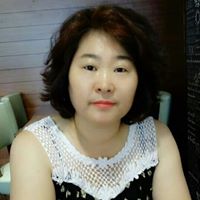Min Feng Yu
age ~65
from San Jose, CA
- Also known as:
-
- Min F Yu
- Minfeng F Yu
- Min Fyu
- Yu Minfeng
- Phone and address:
- 1965 Woody Ct, San Jose, CA 95132
Min Yu Phones & Addresses
- 1965 Woody Ct, San Jose, CA 95132
- 1192 Bitternut Ct, San Jose, CA 95131
- 817 Ponderosa Ave, Sunnyvale, CA 94086
- Santa Clara, CA
Us Patents
-
Method For Etching Low K Dielectric Layers
view source -
US Patent:6387819, May 14, 2002
-
Filed:Apr 29, 1998
-
Appl. No.:09/069568
-
Inventors:Min Yu - San Jose CA
-
Assignee:Applied Materials, Inc. - Santa Clara CA
-
International Classification:H01L 21302
-
US Classification:438725, 216 67, 216 41, 216 51
-
Abstract:A method of etching an organic dielectric layer on a substrate with a high etching rate and a high etching selectivity ratio. The organic dielectric layer comprises a low k dielectric material, such as a silicon-containing organic polymer, for example, benzocyclobutene. A patterned mask layer is formed on the organic dielectric layer , and the substrate is placed in a process zone of a process chamber. An energized process gas introduced into the process zone , comprises an oxygen-containing gas for etching the organic dielectric layer , a non-reactive gas for removing dissociated material to enhance the etching rate, and optionally, passivating gas for forming passivating deposits on sidewalls of freshly etched features to promote anisotropic etching. Preferably, during etching, the temperature of substrate is maintained at a low temperature of from about 15Â C. of 80Â C.
-
Integrated Low K Dielectrics And Etch Stops
view source -
US Patent:6669858, Dec 30, 2003
-
Filed:Nov 5, 2001
-
Appl. No.:10/011369
-
Inventors:Claes H. Bjorkman - Mountain View CA
Min Melissa Yu - San Jose CA
Hongquing Shan - San Jose CA
David W. Cheung - Foster City CA
Kuowei Liu - Santa Clara CA
Nasreen Gazala Chapra - Menlo Park CA
Gerald Yin - Cupertino CA
Farhad K. Moghadam - Saratoga CA
Judy H. Huang - Los Gatos CA
Dennis Yost - Los Gatos CA
Betty Tang - San Jose CA
Yunsang Kim - Santa Clara CA -
Assignee:Applied Materials Inc. - Santa Clara CA
-
International Classification:B44C 122
-
US Classification:216 72, 216 13, 216 17, 216 64, 216 74, 438706, 438735, 438737, 438738, 438740, 438778, 438779
-
Abstract:A method of depositing and etching dielectric layers having low dielectric constants and etch rates that vary by at least 3:1 for formation of horizontal interconnects. The amount of carbon or hydrogen in the dielectric layer is varied by changes in deposition conditions to provide low k dielectric layers that can replace etch stop layers or conventional dielectric layers in damascene applications. A dual damascene structure having two or more dielectric layers with dielectric constants lower than about 4 can be deposited in a single reactor and then etched to form vertical and horizontal interconnects by varying the concentration of a carbon:oxygen gas such as carbon monoxide. The etch gases for forming vertical interconnects preferably comprises CO and a fluorocarbon, and CO is preferably excluded from etch gases for forming horizontal interconnects.
-
Integrated Low K Dielectrics And Etch Stops
view source -
US Patent:6858153, Feb 22, 2005
-
Filed:Nov 5, 2001
-
Appl. No.:10/011368
-
Inventors:Claes H. Bjorkman - Mountain View CA, US
Min Melissa Yu - San Jose CA, US
Hongquing Shan - San Jose CA, US
David W. Cheung - Foster City CA, US
Kuowei Liu - Santa Clara CA, US
Nasreen Gazala Chapra - Menlo Park CA, US
Gerald Yin - Cupertino CA, US
Farhad K. Moghadam - Saratoga CA, US
Judy H. Huang - Los Gatos CA, US
Dennis Yost - Los Gatos CA, US
Betty Tang - San Jose CA, US
Yunsang Kim - Santa Clara CA, US -
Assignee:Applied Materials Inc. - Santa Clara CA
-
International Classification:C23F001/00
-
US Classification:216 72, 216 59, 216 63, 216 64, 216 67, 438780, 438618, 438689, 438735, 438737, 438778
-
Abstract:A method of depositing and etching dielectric layers having low dielectric constants and etch rates that vary by at least 3:1 for formation of horizontal interconnects. The amount of carbon or hydrogen in the dielectric layer is varied by changes in deposition conditions to provide low k dielectric layers that can replace etch stop layers or conventional dielectric layers in damascene applications. A dual damascene structure having two or more dielectric layers with dielectric constants lower than about 4 can be deposited in a single reactor and then etched to form vertical and horizontal interconnects by varying the concentration of a carbon:oxygen gas such as carbon monoxide. The etch gases for forming vertical interconnects preferably comprises CO and a fluorocarbon, and CO is preferably excluded from etch gases for forming horizontal interconnects.
-
Integrated Low K Dielectrics And Etch Stops
view source -
US Patent:6340435, Jan 22, 2002
-
Filed:Jun 9, 1999
-
Appl. No.:09/329012
-
Inventors:Claes H. Bjorkman - Mountain View CA
Min Melissa Yu - San Jose CA
Hongquing Shan - San Jose CA
David W. Cheung - Foster City CA
Kuowei Liu - Santa Clara CA
Nasreen Gazala Chapra - Menlo Park CA
Gerald Yin - Cupertino CA
Farhad K. Moghadam - Saratoga CA
Judy H. Huang - Los Gatos CA
Dennis Yost - Los Gatos CA
Betty Tang - San Jose CA
Yunsang Kim - Santa Clara CA -
Assignee:Applied Materials, Inc. - Santa Clara CA
-
International Classification:C23F 100
-
US Classification:216 72, 216 13, 216 17, 216 18, 216 64, 216 74, 216 76, 438689, 438702, 438780
-
Abstract:A method of depositing and etching dielectric layers having low dielectric constants and etch rates that vary by at least 3:1 for formation of horizontal interconnects. The amount of carbon or hydrogen in the dielectric layer is varied by changes in deposition conditions to provide low k dielectric layers that can replace etch stop layers or conventional dielectric layers in damascene applications. A dual damascene structure having two or more dielectric layers with dielectric constants lower than about 4 can be deposited in a single reactor and then etched to form vertical and horizontal interconnects by varying the concentration of a carbon:oxygen gas such as carbon monoxide. The etch gases for forming vertical interconnects preferably comprises CO and a fluorocarbon, and CO is preferably excluded from etch gases for forming horizontal interconnects.
Resumes

Senior Se
view sourceLocation:
San Jose, CA
Industry:
Telecommunications
Work:
Opelin 1997 - 2000
Sbe
Sgi 1996 - 1997
Sbe
Unisys 1989 - 1996
Engineer
Appliedmicro 1989 - 1996
Senior Se
Sbe
Sgi 1996 - 1997
Sbe
Unisys 1989 - 1996
Engineer
Appliedmicro 1989 - 1996
Senior Se

Staff Se
view sourceLocation:
San Francisco, CA
Industry:
Computer & Network Security
Work:
Qlogic
Staff Se
Staff Se
Education:
California State University, Long Beach 1989 - 1992

Min Yu
view source
Min Yu
view source
Min Yu
view source
Min Yu
view source
Min Yu
view source
Min Jian Yu
view sourceMedicine Doctors

Min Yu
view sourceSpecialties:
Psychiatry
Work:
Union Behavioral Health
111 W High St STE 204, Elkton, MD 21921
(410)6200008 (phone), (410)6201999 (fax)
111 W High St STE 204, Elkton, MD 21921
(410)6200008 (phone), (410)6201999 (fax)
Education:
Medical School
Hunan Med Univ, Changsha City, Hunan, China
Graduated: 1984
Hunan Med Univ, Changsha City, Hunan, China
Graduated: 1984
Procedures:
Psychiatric Diagnosis or Evaluation
Psychiatric Therapeutic Procedures
Psychiatric Therapeutic Procedures
Conditions:
Anxiety Dissociative and Somatoform Disorders
Attention Deficit Disorder (ADD)
Bipolar Disorder
Dementia
Depressive Disorders
Attention Deficit Disorder (ADD)
Bipolar Disorder
Dementia
Depressive Disorders
Languages:
Chinese
English
Spanish
English
Spanish
Description:
Dr. Yu graduated from the Hunan Med Univ, Changsha City, Hunan, China in 1984. She works in Elkton, MD and specializes in Psychiatry. Dr. Yu is affiliated with Medstar Union Memorial Hospital and Union Hospital Of Cecil County.
Name / Title
Company / Classification
Phones & Addresses
Cinori Tech, LLC
Whole Sale Electronic Components
Whole Sale Electronic Components
4671 Albany Cir, San Jose, CA 95129
Owner, Principal
Min's Guest Home
Residential Care Services
Residential Care Services
1534 Kooser Rd, San Jose, CA 95118
(408)2673699
(408)2673699
Owner
NOVUS DEVICE CORPORATION
Mfg Gauge Systems & Whol Tire Valve Stems
Mfg Gauge Systems & Whol Tire Valve Stems
1580 Oakland Rd STE C110, San Jose, CA 95131
(408)4416146
(408)4416146
President
GEOMETRY SYSTEMS, INC
Business Services
Business Services
630 Greylyn Dr, San Ramon, CA 94583
Plaxo

min yu
view sourceBrown Shoe

LIN YU MIN
view source觸碰行銷

Min Hyung Yu
view source
Min Ji Yu
view source
Min Jung Yu
view source
Min V Yu
view source
Min Si Yu
view source
Min Seuk Yu
view source
Chia Min Yu
view source
Min Ki Yu
view sourceGoogleplus

Min Yu

Min Yu
Tagline:
It is not our abilities that show what we truly are, it is our choices.

Min Yu

Min Yu
Tagline:
Rebecca

Min Yu

Min Yu
Relationship:
Single

Min Yu

Min Yu
Myspace
Classmates

Min Yu
view sourceSchools:
University of Louisville Medical High School Louisville KY 1990-1994
Community:
Mark Baker, Will Mcleod, Anne Vanderhaar, Bettina Vogel, Matry Haven

Min Yu
view sourceSchools:
Mantador Elementary School Mantador ND 1979-1983
Community:
Francine Kebede, Melissa Melissa, Justinn Rakesh

Rocklin High School, Rock...
view sourceGraduates:
Min Yu (2003-2007),
Christina Adkinson (1992-1996)
Christina Adkinson (1992-1996)

Memorial Hall High School...
view sourceGraduates:
Young Min Yu (1999-2003),
Benjamin Hinds (1988-1992)
Benjamin Hinds (1988-1992)
Youtube
Get Report for Min Feng Yu from San Jose, CA, age ~65

![[Fanvid]Close to you - Kim Hyun Joong & Jung So Min [Fanvid]Close to you - Kim Hyun Joong & Jung So Min](https://i.ytimg.com/vi/caPKIiv-Z-M/0.jpg)
![[HD] HIT-5 ft. Min Ah (Girl's Day) Paleni ~ Afraid... [HD] HIT-5 ft. Min Ah (Girl's Day) Paleni ~ Afraid...](https://i.ytimg.com/vi/GHZ9DJ_tleM/0.jpg)



